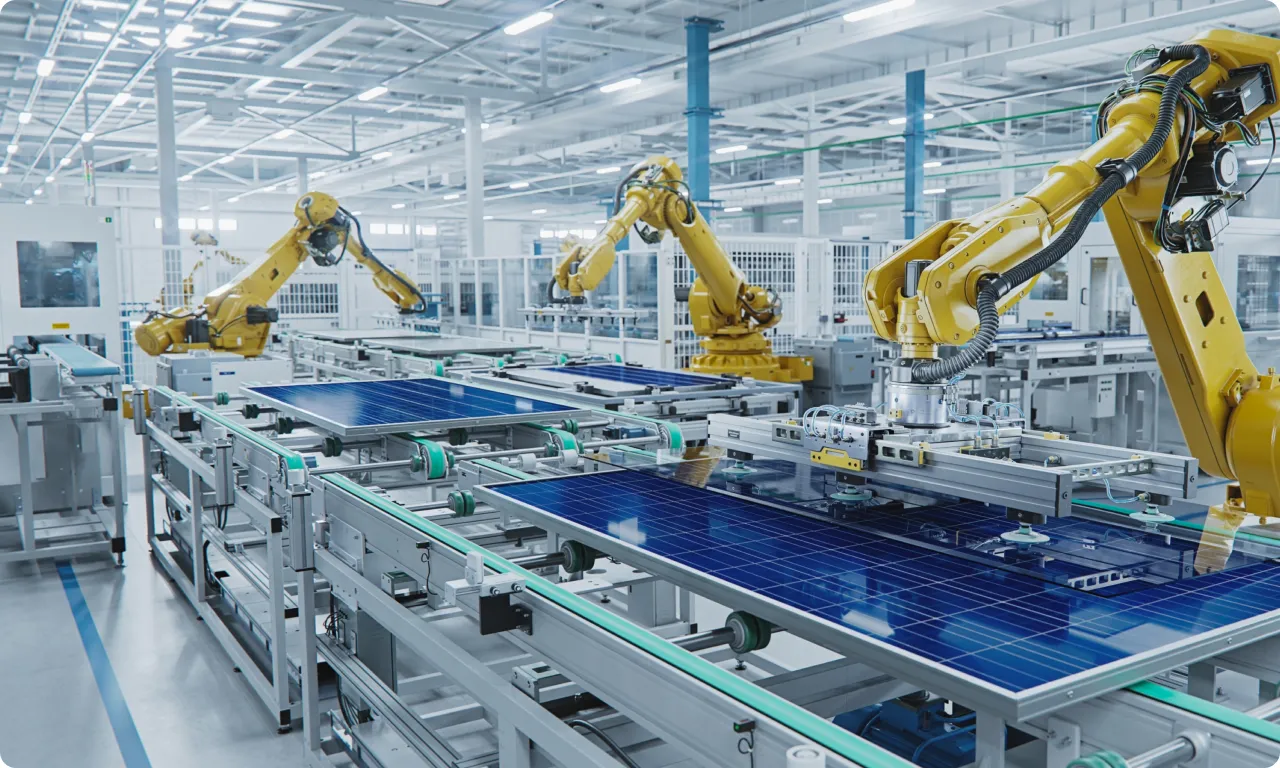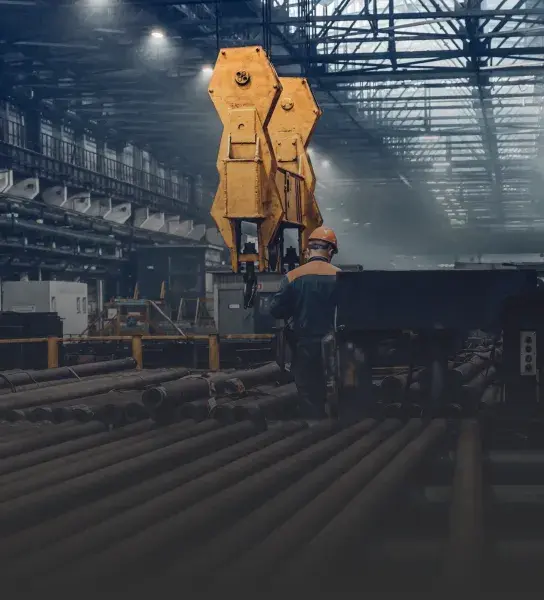
SAP Predictive Asset Insights (PAI)
Prevent breakdowns, save on maintenance, and make your assets last with predictive insights from SAP PAI.



Prevent Failures Before They Stop Your Business
Unplanned downtime remains one of the biggest reasons companies lose time and money. When equipment fails without warning, production grinds to a halt, repairs become costly, and safety risks climb. Regular maintenance often isn’t enough. Information gets scattered, early warning signs go unnoticed, and problems are usually found only after real damage has already occurred.
SAP Predictive Asset Insights (SAP PAI) gives companies a clearer, more connected way to manage equipment health. Built on SAP Asset Central Foundation, it gathers data from sensors, IoT platforms, and enterprise systems to identify early signs of wear and predict potential failures. The solution works seamlessly with other Intelligent Asset Management (IAM) modules, such as SAP Asset Strategy and Performance Management (ASPM) and SAP Business Network Asset Collaboration, creating a single view of every asset. SAP PAI can also be deployed independently, integrating with IoT and SAP S/4HANA or other ERP systems to deliver predictive insights without requiring a full IAM setup.
Business Benefits of SAP Predictive Asset Insights
Fewer unplanned downtimes
Lower maintenance and spare parts costs
Higher reliability and safety
Clear visibility for everyone involved
Compliance with international standards
Challenges You Can Overcome With SAP Predictive Asset Insights
When a key piece of equipment goes down, the whole process suffers. Production pauses, repairs take time and money, and planned tasks get pushed aside. Each unexpected failure slows output, adds pressure to the team, and creates a ripple effect across operations.
The problem usually isn’t about missing data — it’s about data living in too many places. Information from sensors, monitoring systems, and ERP platforms doesn’t always connect, so early warning signs get lost. SAP PAI brings everything together in one clear view, helping maintenance teams see what’s coming so they can fix issues before production stalls.
Key Capabilities of SAP Predictive Asset Insights
Real-time asset monitoring
- Shows how each asset is running right now.
- Brings readings from all sensors into one clear picture.
- Tracks shifts in vibration, temperature, or pressure the moment they appear.
Submodules and Key Functional Blocks of SAP Predictive Asset Insights
IoT data integration
Condition monitoring
Predictive analytics engine
Event and alert management
Maintenance integration
Digital twin visualization
Integrations of SAP PAI Within the SAP Ecosystem
- SAP Asset Central Foundation (ACF): ACF is the asset master data hub of the SAP world. It unites technical specifics, equipment organization, and digital twins. SAP PAI predictions stay consistent because they rely on synchronized data from the shared foundation.
- SAP Asset Strategy and Performance Management (ASPM): ASPM leverages forecasts from SAP PAI to adjust and improve maintenance plans. When SAP PAI detects early signs of potential failure, ASPM updates risk assessments and fine-tunes maintenance strategies. This connection turns real-time equipment data into actionable recommendations.
- SAP Business Network Asset Collaboration (BNAC): In BNAC, manufacturers, service providers and asset owners are connected within a single network. This also allows companies to share performance information, documents, and maintenance plans with partners. SAP PAI maintains the most current information, which includes the actual equipment conditions and forecasts.
- SAP S/4HANA Plant Maintenance (PM): SAP PAI integrates with SAP S/4HANA PM to turn predictive insights into real maintenance actions. When the system detects signs of a potential failure, it automatically creates a work order, allowing teams to act early and prevent downtime.
- SAP BTP, IoT, and third-party platforms: SAP PAI connects with the Internet of Things (IoT) on SAP BTP and other platforms to gather sensor data from any source. This allows organizations to continue using their current monitoring software and non-SAP equipment, but still have a complete overview of the business asset performance.
Our SAP PAI Services

Consulting and strategy development

System design and implementation
.webp?width=920&height=281&name=iot%20(2).webp)
Predictive model development

Integration with IoT and analytics

User training and support
Industries That Benefit From SAP PAI

Manufacturing

Mining and heavy industry
.webp)
Energy and utilities

Oil and gas

Transportation and logistics
How Companies Turn Predictive Insights Into Real Results
Reliability is important to energy providers. SAP PAI uses real-time information on turbines and transformers to avoid failures and maximize performance.
- Tracks temperature, vibration, and electrical load to spot overheating or insulation issues early.
- Predicts failures before they happen, allowing maintenance to be planned in advance.
- Helps reduce downtime by 25%, lower emergency repairs by 30%, and save more than $500,000 per year.
In remote oilfields, the cost of production may be driven up by frequent breakdowns of pumps and expensive logistics. SAP PAI tracks data from the pumps and automates maintenance planning.
- Collects vibration and pressure data to detect early deviations.
- Sends automatic alerts and creates work orders in SAP S/4HANA PM.
- Reduces equipment failures by 40%, cuts repair and logistics costs by 50%, and increases equipment availability by 98%.
Sudden failures may disorient the whole supply chain. PAI helps operators maintain reliable, on-time fleets.
- Monitors engines, braking systems, and key components through IoT sensors.
- Integrates with SAP EAM to automatically generate maintenance plans.
- Reduces unplanned stops by 35%, extends component life by 15%, and improves schedule accuracy to 96%.
Monitors the heavy equipment vibration, load, and temperature in real time.
Spots the first signs of wear or fatigue before they turn into serious problems, helping teams prevent unexpected breakdowns.
Downtime dropped by 15%, and repair expenses fell by 22%. As a result, equipment now runs more safely and stays available when it’s needed most.
Why LeverX
Proven track record
Industry experts
SAP partnership
Quality and security
Investment in innovation
Flexibility
SAP PAI Implementation Roadmap
Assessment and goal setting
- Review current maintenance processes, asset data, and IT systems.
- Define clear business goals for predictive maintenance and measurable KPIs.
- Identify integration points across your SAP and IoT landscape.
Solution design and architecture
- Design a system that reflects how your assets operate in real conditions.
- Define key data sources, performance metrics, and prediction models.
- Map how data flows between systems to keep information consistent and connected.
Implementation and integration
- Install SAP PAI and tie it with sensors, IoT gateways, and control systems.
- Integrate with SAP S/4HANA, SAP EAM/PM, SAP BTP, and SAC.
- Perform testing and automate processes to maintain efficiency.
Predictive model development and testing
- Build predictive models using both historical and live equipment data.
- Validate model accuracy and adjust algorithms to match real-world conditions.
- Use predictive insights to improve maintenance schedules and planning.
Visualization and user enablement
- Create dashboards and reports in SAP Analytics Cloud to visualize asset performance.
- Train teams to interpret predictive data and act on insights quickly.
- Standardize workflows for tracking asset health and maintenance results.
Continuous optimization and support
- Monitor data quality and model performance as operations evolve.
- Regularly review system performance and optimize predictive maintenance strategies.
- Offer continuous technical maintenance and training to ensure the solution is effective in the long run.
FAQ
What is SAP Predictive Asset Insights?
At its core, SAP Predictive Asset Insights (SAP PAI) is a system that helps companies continuously monitor their equipment — not occasionally. It pulls data from sensors, IoT gateways, and enterprise systems to show how assets perform in real time. The goal isn’t just to react when something breaks, but to see trouble coming early.
In practice, that often means connecting a lot of different data sources and turning them into something meaningful. SAP PAI does that analysis for you. It predicts when a component might fail, how severe the impact could be, and what you can do before it happens. It’s not just about technology, though. The real advantage comes when maintenance teams start trusting the data enough to change how they work. That’s when things get interesting.
Can SAP PAI work without the full Intelligent Asset Management suite?
Yes, and this is something many companies ask about at the start. SAP PAI was built to integrate with the full SAP IAM suite, but it isn’t required. You can start small. A lot of organizations first connect PAI to SAP S/4HANA Plant Maintenance or their existing IoT setup. Later, if they decide to expand, it’s easy to bring in tools like SAP ASPM or SAP BNAC.
That flexibility matters. It means you don’t have to overhaul your entire IT landscape on day one. You can prove the value with one plant or one asset type and build from there — step by step.
How long does it take to implement SAP PAI?
How secure is SAP PAI?
Security is always the elephant in the room — especially when industrial data starts moving across networks. SAP PAI runs on the SAP Business Technology Platform (BTP), which means all data traffic, processing, and storage follow strict enterprise-grade security standards: ISO, GDPR, and SOC.
But beyond certificates, control is what gives most companies peace of mind. You decide what data goes in, where it’s stored, and who sees it. The system logs every action. Even predictive models can be governed so they don’t use sensitive information. Like any cloud platform, it still requires attention, regular security reviews, and user access audits.
Can SAP PAI improve sustainability goals?
Contact Us
What happens next?
-
1
An expert will reach out to you to discuss your specific needs and requirements.
-
2
We'll sign an NDA to ensure any sensitive information is kept secure and confidential.
-
3
We'll work with you to prepare a customized proposal based on the project's scope, timeline, and budget.
years of expertise
projects
professionals
Contact Us
CONTACT US
If you are looking for an SAP Global Strategic Supplier or Technology Partner for your business, fill out the form below, and we will contact you at short notice.
The unplanned halts on the production line tend to result in missed targets and increased costs of repairs. SAP PAI allows manufacturers to forecast the period when motors, gearboxes, or conveyors should be serviced and maintain production at the required level.